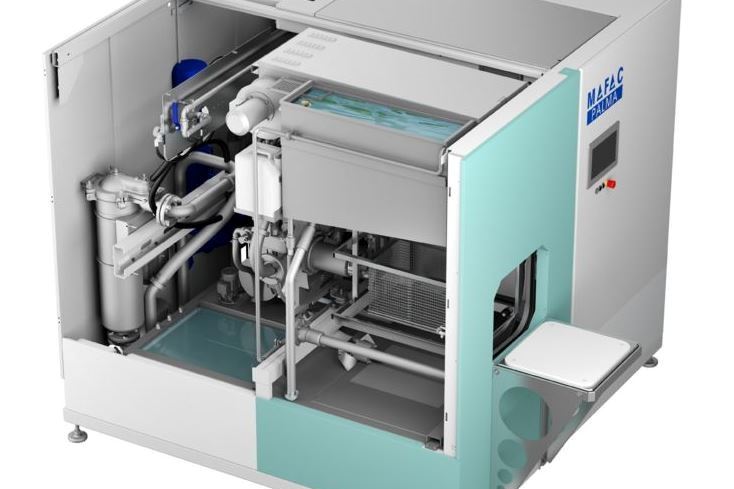Liquid Coatings Q&A: Causes of Overcurrent Faults
Why do I get “overcurrent” faults when I spray my metallic coating materials?
Q. Why do I get “overcurrent” faults when I spray my metallic coating materials? I do not have this issue with solid color paints.
A. Electrostatic equipment is compatible with a range of coating materials including metallic. Many manufacturing facilities, including automotive OEMs and its tier suppliers, successfully apply metallic coating materials to car bodies, bumpers, mirror housings, door handles, wheels and a variety of other trim components.
Featured Content
Power supplies used to energize electrostatic equipment can have a variety of safety features. Overcurrent protection is a feature that most power supplies have. The overcurrent set point may be fixed or user-adjustable. When adjustable, the equipment manufacturer will typically advise the user to document the current reading under normal operating conditions and then set the threshold 30 to 50 micro amps above this. If the current level reaches this threshold, the power supply will shut down with an overcurrent fault.
When using electrostatic application equipment, the resistivity of the coating material should be tested to ensure that it is within an acceptable range for the specific manufacturer’s equipment. Generally, for manual applications, the recommended range for resistance is between 0.1–∞ megaohms. For automatic application equipment, resistance in the range of 0.05 megaohms is acceptable. The material should not be so conductive (low resistance) that the voltage applied at the applicator follows the fluid column to the grounded fluid supply. If this happens, the system current will increase and the power supply will shut down, most commonly with an overcurrent fault.
You state that the problem primarily occurs when spraying metallic coatings, so most likely the resistance of the paint is within an acceptable range. The metal/metallic flakes in the coating material is the most probable cause of the fault. In some situations, the electrostatic charge applied at the applicator can influence the flakes in the coating material to “align” in the fluid path. Depending on a number of variables, including fluid flow rate, length and diameter of the fluid line and voltage level, this alignment can occur quickly or take some time before it causes a fault condition. To verify if your issue is related to this, monitor the current meter on your power supply when spraying the metallic coating material. If the current meter gradually increases to the overload set point, then this is an indication that alignment is occurring.
The following countermeasures can be used individually or in combination to overcome metallic alignment issues:
- Increase the length of the fluid line between the spray head and the location at which it is grounded. For electrostatic hand-held applicators, a standard fluid line is about 5 to 7 inches in length between the spray head and the grounded fluid handle. Most manufacturers offer a variety of coiled fluid lines, which are significantly longer, but coiled to fit within the same area. This increases the distance between where voltage is applied and ground, reducing the chances of alignment. Coiled fluid lines are also available for automatic application equipment.
- Decrease the inside diameter of the fluid line. A smaller ID fluid line will reduce the surface area within the fluid line and increase the fluid velocity as it moves through the tube. This technique can help in preventing metallic
flake alignment. - Decrease the voltage level. While the system is operating, slowly reduce the voltage set point in 5-kV increments while monitoring the current meter. If the current takes a significant drop relative to the voltage, then it is most likely an optimal area to operate. If the voltage and the current both track together (gradually decreasing), this may not offer any benefit.
- Some people think that reducing the voltage set point defeats the benefits of using electrostatics. With most electrostatic systems, if you have a high voltage level set-point and a high current reading, then your applicator tip voltage is actually low. Aim for a low current reading, which means the tip voltage is higher. For specific information relative to the equipment you are using, ask the manufacturer for a high voltage load curve.
- Sequencing of the high voltage “on” signal. This is typically only an option for advanced automated systems that have features within the power supply or external PLC that enable the high-voltage activation signal to delay relative to the spray signal. The material then moves through the fluid line before voltage is activated.
Safety note: Care should be taken when routing fluid lines. The fluid line should be protected from ground, except at the designed attachment point. If the fluid line along its length comes in contact with ground, there is a chance that an arc can occur, creating a “pinhole” in the fluid line. It’s best to keep the fluid line away from ground, and in some cases, an oversized tube can be placed over it for additional protection.
Originally published in the April 2016 issue.
RELATED CONTENT
-
Painting Over Powder Coating
How safely can they apply their wet paint over our powder coated parts?
-
A Current Affair: Examining the "No Amperage" Phenomenon
If you are performing a coating process that requires the use of a rectifier, you may have experienced the "no amperage" problem. Here's a look at the phenomenon and some solutions…
-
Coating Thickness Measurement: The Fundamentals
A review of available test methods, common applications and innovative instrumentation...



















